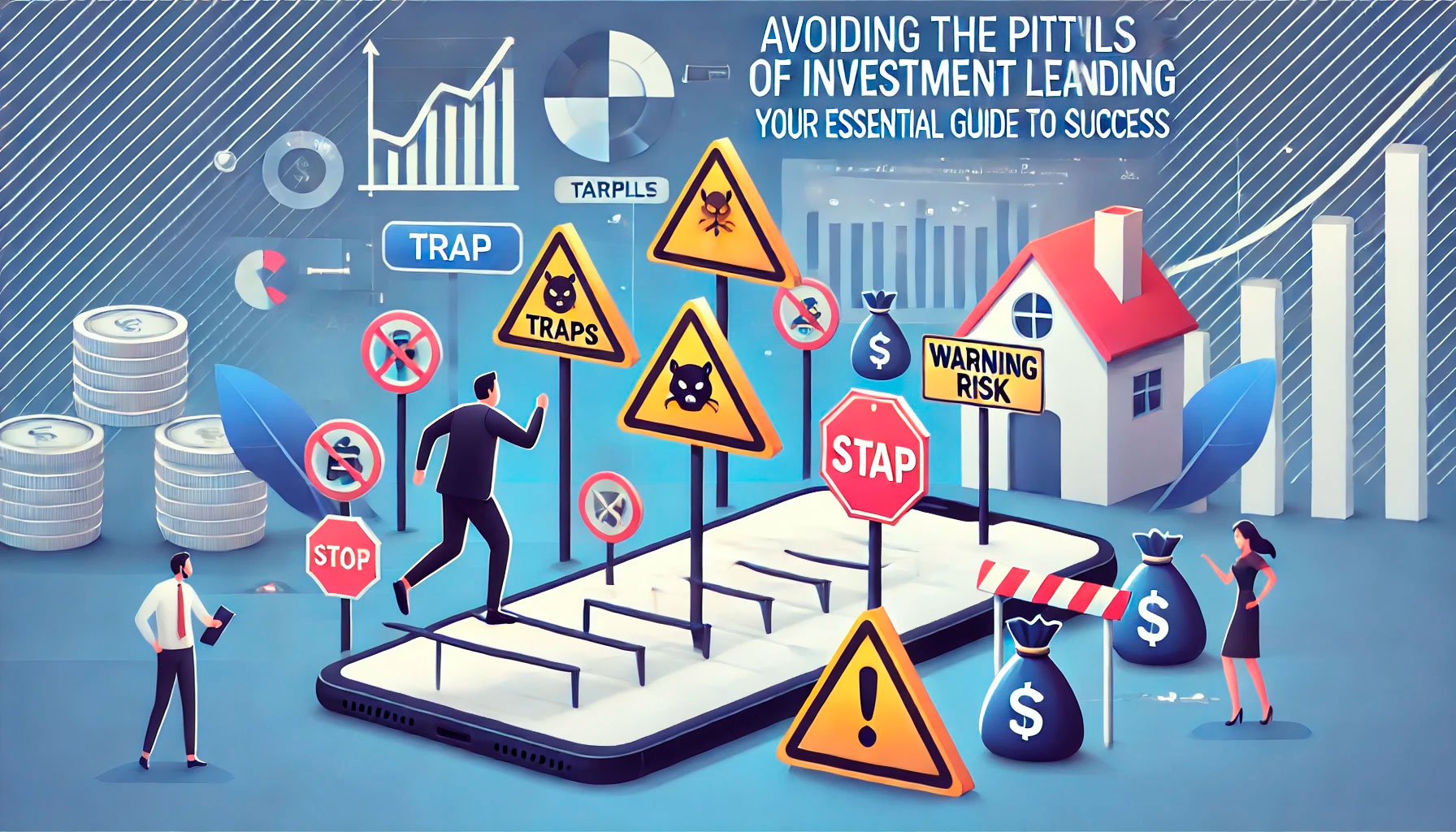Investment loans offer an exciting opportunity for growth, whether you’re diving into real estate, expanding a business, or investing in new markets. However, navigating the complexities of borrowing to invest comes with its own risks. Below, we explore common mistakes made by borrowers and provide clear strategies to avoid them, ensuring your investment loan works in your favor.
Key Considerations Before Borrowing
Taking on an investment loan involves more than securing funds—understanding the bigger picture is essential. Here’s what to keep in mind:
1. Understand the Total Cost
Borrowers often focus on the principal loan amount without realizing the full cost that comes with interest, fees, and long-term repayment. A loan that seems manageable at first can spiral into an expensive burden over time. Not only do you need to account for the monthly payments, but also additional fees, penalties for early repayment, and the interest accrued over time. Ignoring these factors can lead to financial strain.
Solution: Use detailed loan calculators and consult financial advisors to break down the total cost, including fees, over the repayment period. Consider how loan costs affect your overall profitability and ability to repay. Take into account the possible interest changes in case of a variable-rate loan and make sure you have enough buffer to absorb those changes.
2. Assess the Stability of Your Investment
Markets fluctuate, and no investment is without risks. Relying on a single projection or market trend to guarantee your returns can lead to unpleasant surprises. Real estate prices, for example, can vary based on a multitude of factors, including local market conditions, economic shifts, and even unforeseen environmental factors. Similarly, stocks can react unpredictably to global market events.
Solution: Diversify your investment analysis. Look at historical data, consult multiple sources, and calculate different return scenarios—best-case, moderate, and worst-case. Don’t borrow with unrealistic expectations. Having a backup plan is essential in ensuring that your investment does not become a financial liability.
Real-World Case Studies: Learning from Mistakes
To truly grasp the consequences of investment loan mistakes, let’s examine two real-world examples and their outcomes:
Case Study 1: Over-Leveraging in Real Estate
In 2008, many real estate investors borrowed heavily to buy properties, assuming the market would keep rising. When the market crashed, they couldn’t keep up with payments, and many lost their properties and creditworthiness. Those that over-leveraged their assets found themselves unable to refinance their properties or sell at a profit, leading to significant financial losses.
Lesson Learned: Never rely on continuous market growth. Understand market cycles and always keep a financial buffer for downturns. Over-leveraging may seem like a good idea when the market is booming, but it can quickly turn into a disaster when market conditions change.

Case Study 2: Ignoring the Terms
A small business owner took out an investment loan with a low initial interest rate, unaware that it would double after two years. When the interest increased, the business couldn’t manage the higher payments, leading to default. The lack of proper research into the loan terms ended up costing the business its credit rating and access to further capital, stifling growth opportunities.
Lesson Learned: Read the fine print and ensure you understand all terms, especially with variable rates or delayed fee structures. Always prepare for potential increases in your payment obligations.
Strategy: Developing a Smart Repayment Plan
Repaying an investment loan strategically can help you avoid financial pitfalls. Here’s how to stay ahead of your repayment plan:
Tip 1: Align Loan Terms with Investment Maturity
If your investment takes time to mature—such as real estate or business expansion—structure your loan with an appropriate repayment period. Short-term loans may strain your cash flow before you see returns. A longer-term loan, however, allows you to make smaller monthly payments until your investment starts yielding profit.
Example: A commercial property investment may take 3-5 years to fully mature in terms of rental income or appreciation. If your loan has a shorter repayment term, you may be forced to make payments before the property generates sufficient returns, causing financial strain.
Tip 2: Prioritize Early Payments
If possible, make early payments or overpay when you have extra cash flow. This can reduce the overall interest you pay, giving you more flexibility later if your investment takes longer to yield profits. Additionally, making early payments can help reduce the principal amount faster, saving you on interest in the long run.
Choosing Between Fixed and Variable Rates
Investment loans typically offer either fixed or variable interest rates, and selecting the right one is critical.
- Fixed Rates: Ensure consistent monthly payments, which is beneficial for long-term budgeting. However, they might come with a slightly higher initial rate. This offers peace of mind because your repayment obligations won’t change, regardless of interest rate fluctuations in the market.
- Variable Rates: Can start lower, but fluctuate over time, potentially increasing your loan costs in an unpredictable market. Consider this only if you have flexibility in your cash flow to handle rate changes, and be prepared to adjust your budget accordingly.
Action Plan: Evaluate your financial stability and the length of the loan before deciding which type of rate suits your situation. If stability and predictability are priorities, opt for fixed rates. If you’re comfortable with some risk and expect rates to remain stable, a variable rate could save you money initially.
Conclusion: Take Control of Your Loan Decisions
By thoroughly understanding loan terms, analyzing market conditions, and planning strategically, you can avoid the common mistakes made by many borrowers. Whether you’re investing in real estate, stocks, or business assets, keep the long-term picture in mind and ensure that your investment loan works as a stepping stone to financial growth, not a stumbling block.
Takeaway Tips:
- Always factor in total loan costs, not just the loan amount.
- Make sure your investment is diversified and not based on short-term market trends.
- Choose repayment terms and interest rates that align with your investment’s growth timeline.
- Maintain a financial buffer for unexpected expenses or market downturns.
Use this guide to confidently avoid common pitfalls and ensure your investment loan is a sound financial decision that contributes to your long-term success.




